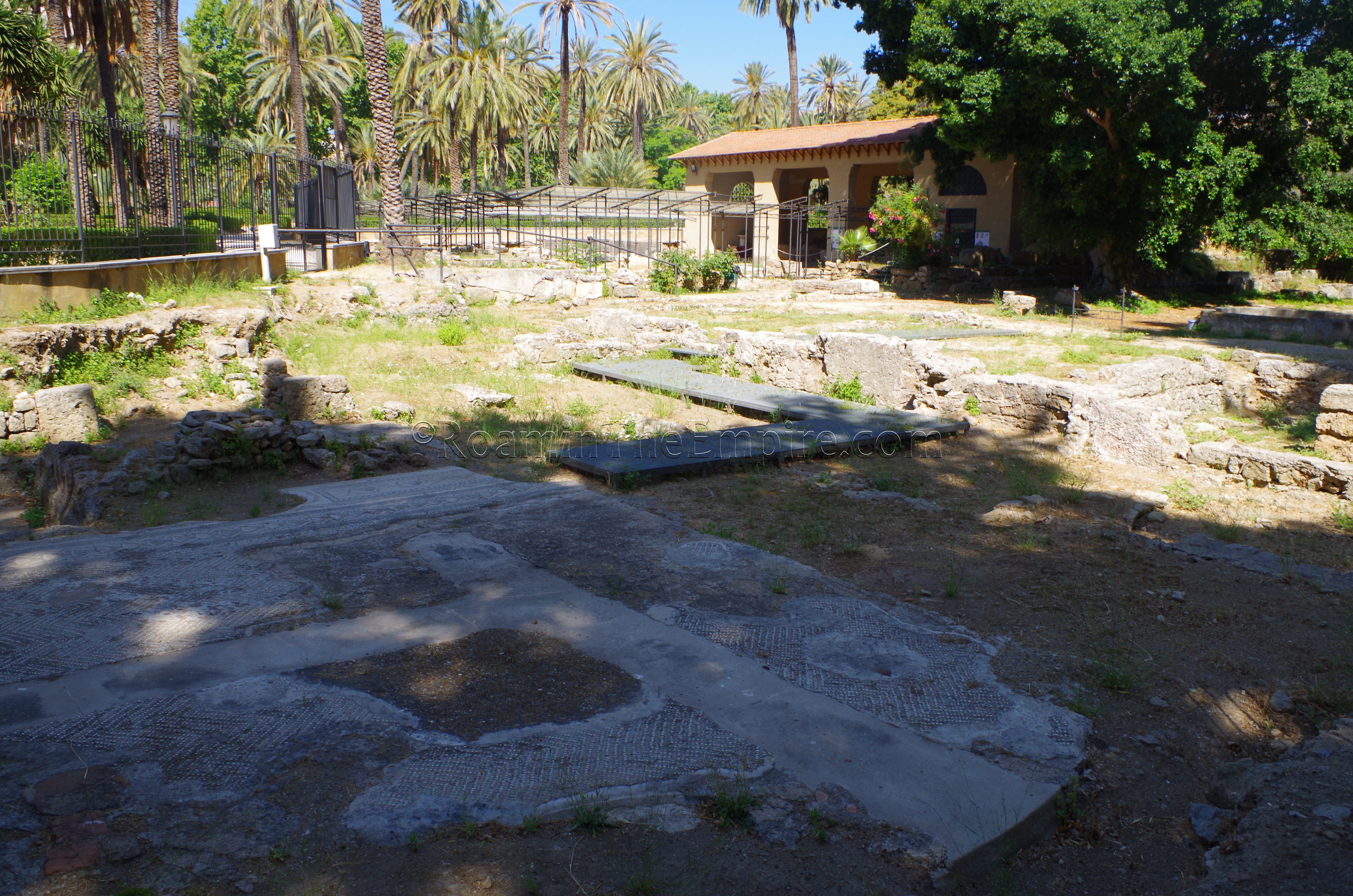
Most Recent Visit: June 2017.
Now the bustling capital of the Sicily region, Palermo can trace its humble beginnings back to its founding as a Phoenician colony in 743 BCE by merchants from Tyre. Coinage suggests that the Phoenician name for the settlement was Machanath, a Phoenician word for a camp or a place of lodging. As the Greeks in the east expanded their influence westward on Sicily and came into contact with the Phoenicians here, they seem to have begun to refer to the settlement as Panormus, a reference to the high quality natural port at the location. The early history of the colony is largely unknown, and its dependence on Tyre likely waned after the latter was put under Persian rule and likely necessitated a closer relationship with Carthage.
By 480 BCE, though, the city seems to have been firmly within the Carthaginian sphere of influence, and it is at Panormus that a Carthaginian army under Hamlicar disembarks en route to attacking nearby Himera. Hamlicar apparently made camp at Panormus for three days in preparation for the march to Himera. The result of the battle was a devastating loss for the Carthaginians, but Panormus remained unscathed as the Greeks did not pursue any further aggressive actions to follow up their victory, and shortly thereafter a peace treaty was concluded between the Carthaginians and the Sicilian Greeks. By this time, Panomus seems to have become one of the key Carthaginian holdings in western Sicily, along with Motya and nearby Solus (Soluntum). A later description by Polybius describes Panormus as the most important Carthaginian city on the island, and that likely held some truth even in the 5th century, but certainly after the destruction of Motya in 397 BCE.
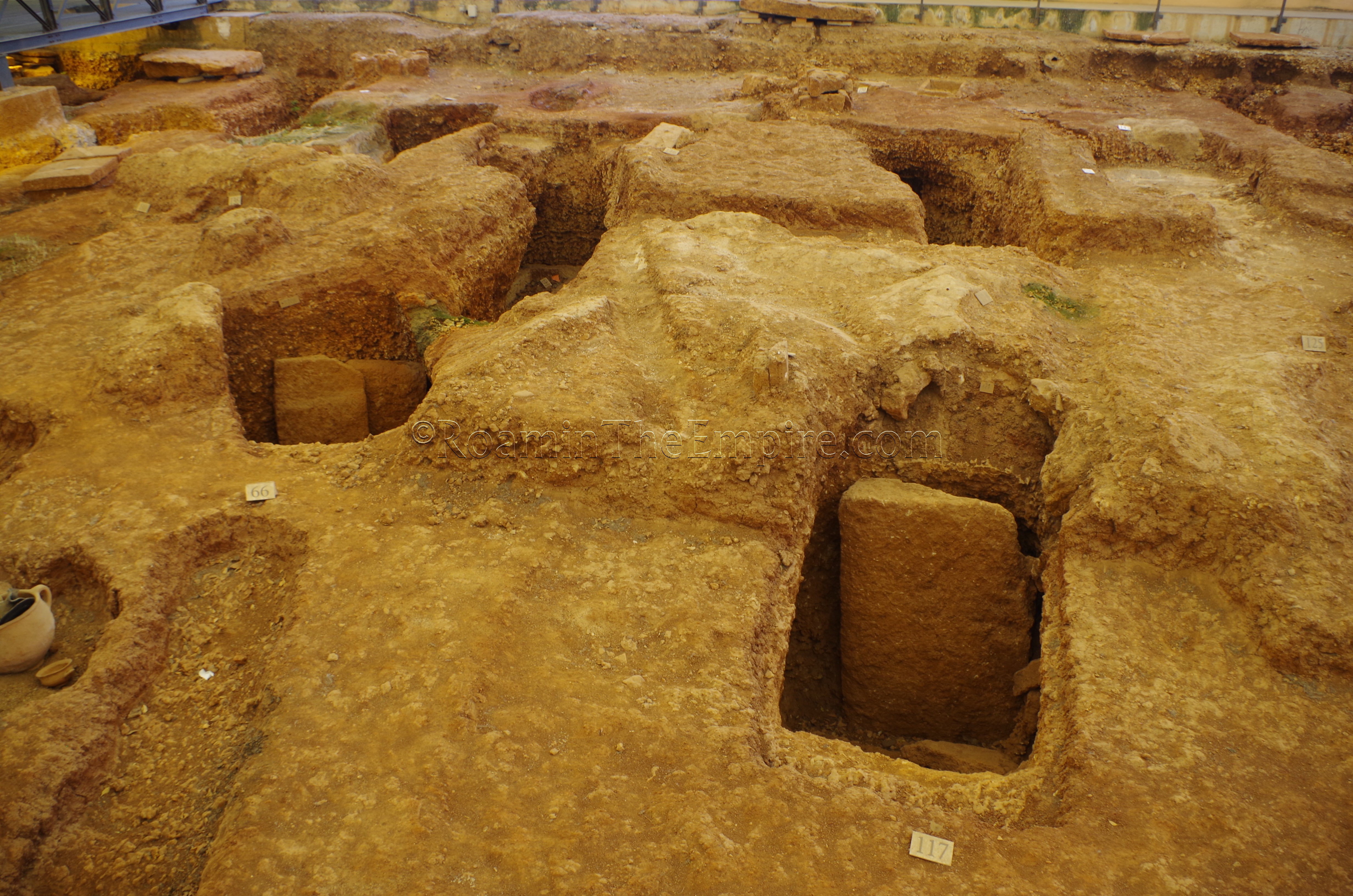
When hostilities were renewed between the Greek cities of Sicily and the Carthaginians in 410 BCE, Panormus seems to have been a major staging point for Carthaginian operations. After a Carthaginian victory at Selinus and the destruction of Himera in 409 BCE, the Greeks pushed back and fought battles against the forces at Panormus and Motya, and it seems as if Panormus was looted by Hermocrates of Syracuse that same year, though was not captured and held. A short peace was struck between the Carthaginians and Greeks from 405 to 398 BCE, ending when Dionysius laid siege to Motya. It was during this siege and the subsequent destruction that many Carthaginian holdings in Sicily defected to the Greeks, but Panormus was among the few that remained loyal. The destruction of Motya increased the Carthaginian reliance on Panormus as a military base of operations in that part of the island, and the city remained in Carthaginian hands with no offensive actions taken against it for the remainder of the conflict.
When Pyrrhus launched his expedition in Sicily in 276 BCE, Panormus was one of the last Carthaginian cities to be taken by Pyrrhus before his campaign was stalled at Lilybaeum. The success of Pyrrhus was short-lived, though, and after failing to take Lilybaeum and leaving the island, Panormus was once again in Carthaginian hands. When the First Punic War broke out between Rome and Carthage, Panormus was once again an important staging area for both land and naval forces, and as such it was an early target for the Romans. In 258 BCE the Roman forces under the consuls Aulus Atilius and Gaius Sulpicius attempted to take Panormus, which was serving as the wintering quarters for a large contingent of the Carthaginian forces. Despite making camp outside the city and offering battle, the Carthaginians never engaged the Romans, and the Romans eventually moved on, leaving Panormus in the hands of the Carthaginians for the time being.
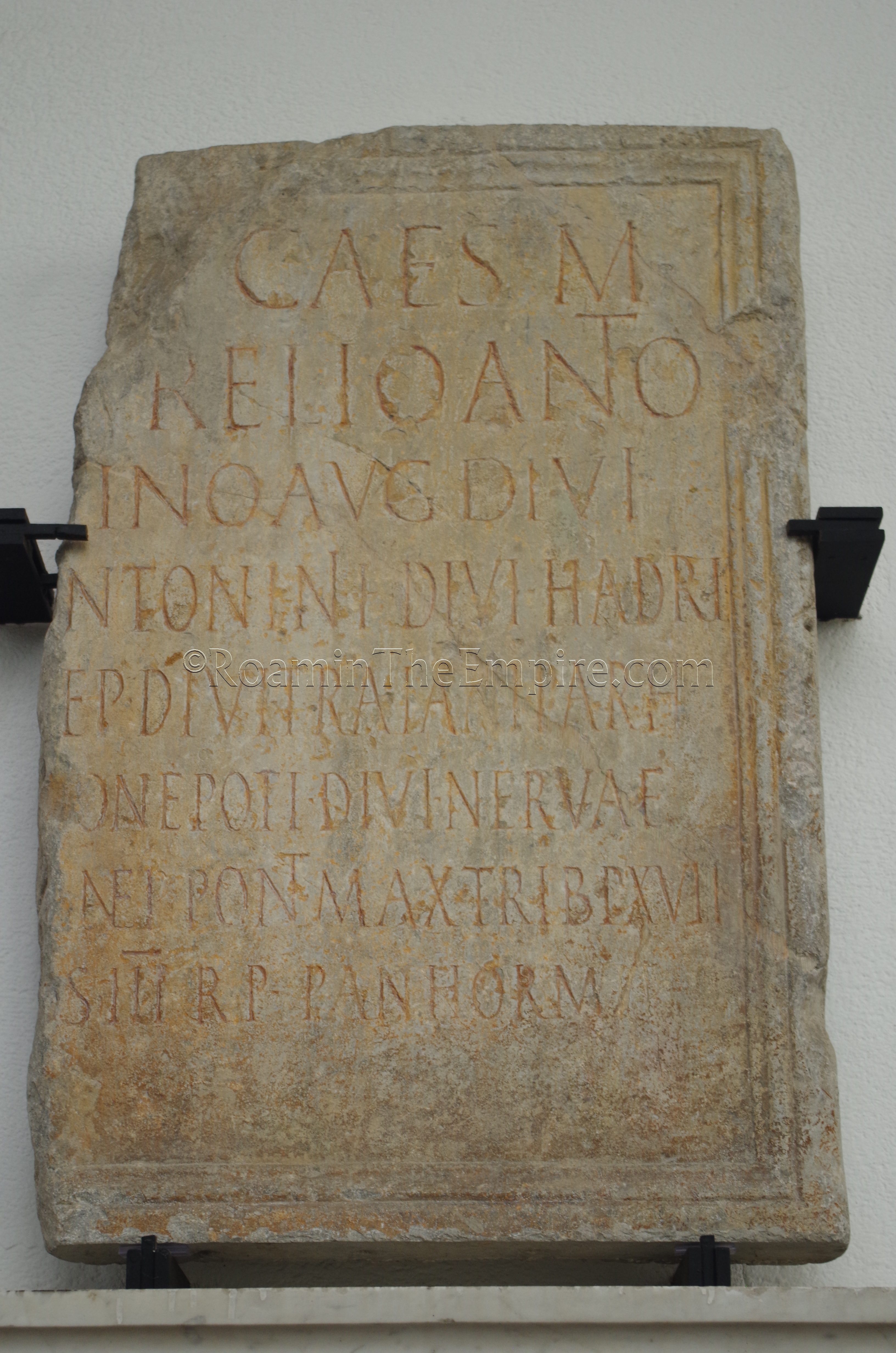
As action shifted to Africa, Panormus was not pressed again for several years. In 254 BCE, however, the Roman consuls Aulus Atilius and Gnaeus Cornelius Scipio Asina sailed for Panormus, laying siege and enacting a naval blockade against the city. As parts of the city fell to the Romans, the older core eventually surrendered and the Romans conquered the city, leaving a garrison there. Panormus served as a naval base for subsequent operations in the area for the Romans. In 250 BCE, one of the Roman consuls, Lucius Caecilius Metellus, was stationed at Panormus, while the other consul had returned to Italy, when a Carthaginian army under the command of Hasdrubal marched into the territory of Panormus, hoping to draw the consul into a fight. Metellus maintained his position in the city, though, drawing the Carthaginians ever closer to the city. When the Carthaginians were within sight of Panormus, Metellus sent out light troops and skirmishers to draw the Carthaginians even closer to the walls of the city and force the Carthaginians to take a battle position. Eventually the Carthaginians routed one of the skirmishing forces and pursued them back towards the walls of Panormus, where Metellus had stationed missile troops with the order to fire on the Carthaginian elephants as soon as they were within range. When the elephants came in range, the Romans fired on them, wounding them and sending them barreling back into the Carthaginian lines as they routed. As the Carthaginian forces were in disarray, the Roman infantry poured out of the city and routed the rest of the Carthaginian forces. Though the Romans did not pursue the routing Carthaginian troops, they did manage to capture all of the remaining Carthaginian elephants, which were sent to Rome to be killed in the circus.
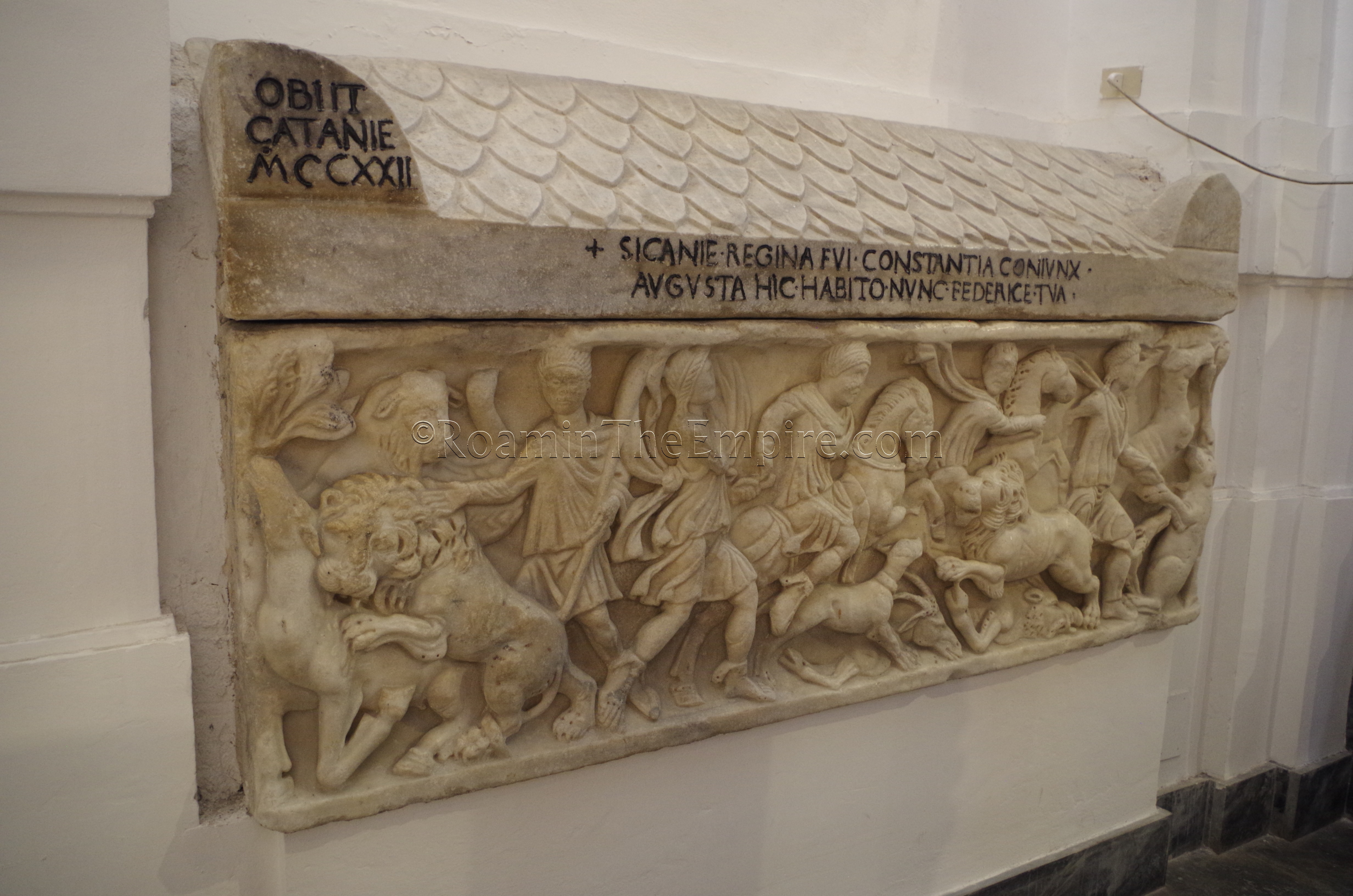
As the war started turning decidedly in favor of the Romans, and the Carthaginian holdings on the island shrunk to essentially Drepana and Lilybaeum, both of which were under siege by the Romans. In 247 BCE, upon returning from raiding the Italian coast, the Carthaginian commander Hamilcar Barca, father of Hannibal, set up a fortified position on a high ground near Panormus, called Heircte or Hercte, probably modern Mount Pellegrino to the west of the city. The incredibly defensible position allowed Hamlicar to threaten the city, tying up Roman forces that needed to remain there to prevent the Carthaginian from moving on the city, taking some of the pressure off of the two besieged cities, particularly Drepana. There was also likely the hope that Panormus would defect back to the Carthaginian side. For three years, the Romans attempted and failed to drive Hamlicar out of his position, while Hamlicar harassed the Roman forces camped at the foot of the of the mountain. In 244 BCE, though, Hamilcar left the position to shift his attention to the Romans at Drepanum. With the end of the war in 241 BCE, Panormus permanently transferred to the Romans.
After the war, Panormus enjoyed some preferred status under the Romans, becoming one of five cities in Sicily exempt from tax and other burdens imposed on subjects, and retaining some autonomy as well as the right to mint coinage. This is likely due somewhat in part to the fidelity of the city after it was captured by the Romans in the First Punic War. The city never came under threat from Carthaginian operations in Sicily during the Second Punic War and seems to have flourished, becoming one of the primary commercial hubs of the island. Though it was never the site of any action during the Sicilian revolt by Sextus Pompey, it nonetheless seems to have lost preferred status and autonomy following that conflict. Thought it is not noted by Pliny the Elder as one of the Sicilian cities that received a colony under Augustus, an inscription noting the ‘Colonia Augusta Panormitanorum’ would seem to indicate that it did indeed become a colony in the time of Augustus, and Cassius Dio and Strabo both further confirm it, with the former setting the date of this at 20 BCE. Subsequent contingents of military colonists were sent under Vespasian and Hadrian, and the city seems to have flourished throughout the imperial period until Gothic conquest in 535 CE.
Getting There: Palermo is the largest city on the island, and as such, is probably the most well-connected cities on the island. There are various ferry connections, as well as an airport that even receives some direct flights from as far away as the United States. It is connected via rail and bus to Catania, the other major airport on the island, and is also connected by rail service to the mainland.
The remains of ancient Panormus are a bit sparse; which might be expected considering Palermo has been continuously occupied since 743 BCE, and has been the major population center on the island for at least the last millennium. There are a few vestiges or Roman and Punic Panormus scattered about town, with varying stages of accessibility.
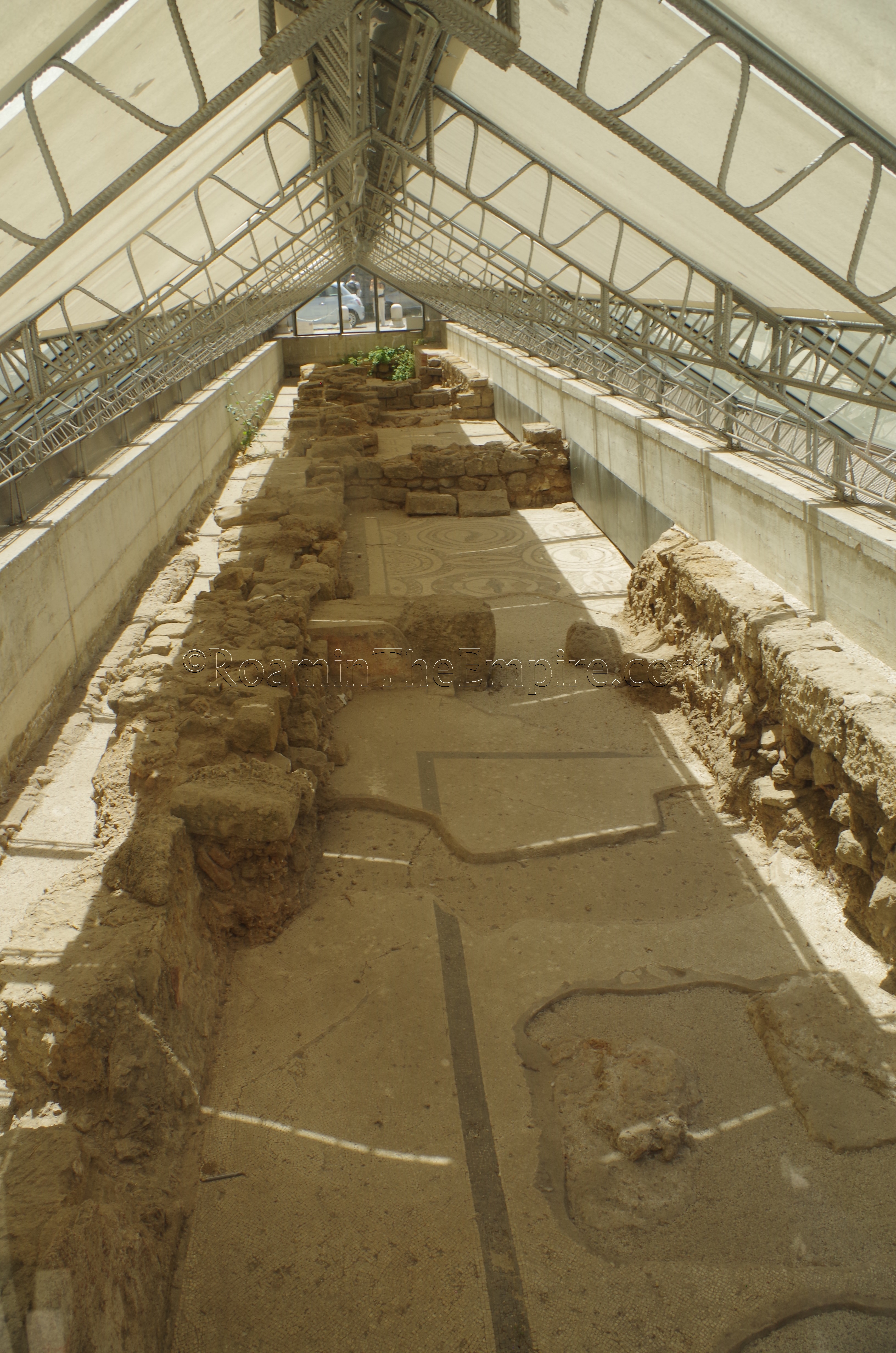
The two main sets of Roman remains are located in the vicinity of the Cattedrale Metropolitana della Santa Vergine Maria Assunta, the Palermo Cathedral. On the east side of the cathedral (or northeast side, more precisely), there is a piazza, the Piazza Sett’Angeli. On the east side of that is the Scavi Archeologici di Epoca Romana, a small set of covered remains running about the length of the piazza. What has been uncovered here is about 30 x 4 meters of a 2nd-3rd century CE villa; but, because it’s really just a slice, while a distinct areas can be distinguished, the form of the dwelling is not really apparent. There are some intact mosaics, including one depicting sea life. Unfortunately, though, the glass that covers the site is pretty poorly maintained. The sloped panels along most of the site are quite dirty, and combined with sun glare, are pretty much useless. The vertical panes of glass on either end are really the only useful places for viewing the remains, which is quite unfortunate given the nicest mosaic is about in the middle. There is a single sign in Italian that explains a bit about the remains.
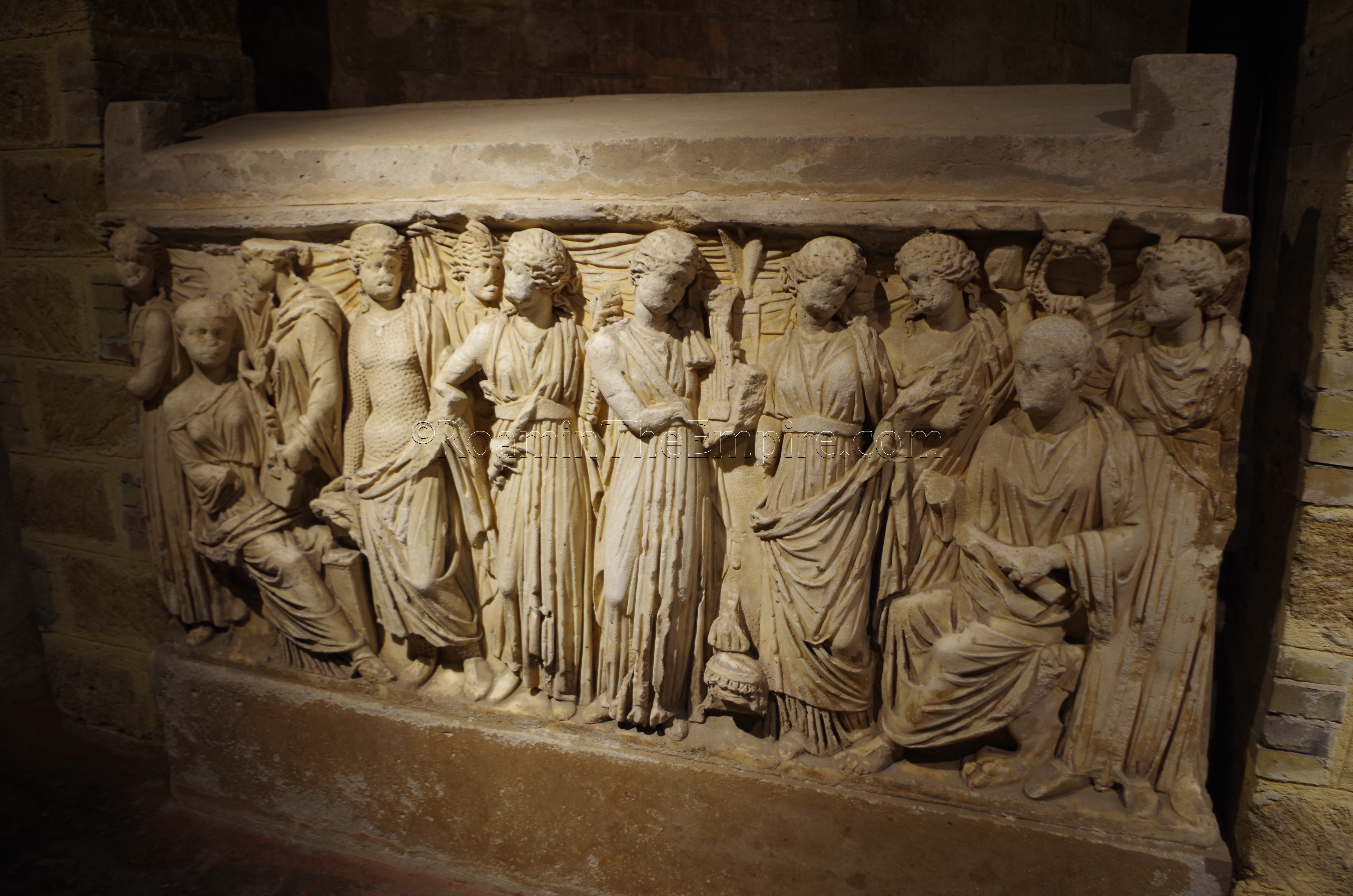
Nearby in the cathedral, there are a few Roman sarcophagi in the crypt that have been re-used. The crypt is not accessible on the free visit to the interior of the cathedral, and must be purchased as part of one of the tours of the ‘monumental area’. There are various combinations that include the crypt, the treasury, the royal tombs, and the roof. The lowest priced combination that includes the crypt is the crypt and treasury option at 2 Euros. All four can be seen for 7 Euros, and honestly, as an aside, the view from the roof is worth the price of any combination ticket including that. The visit to the crypt is self-guided and there are a few signs in Italian that explain the sarcophagi and their individual provenance. The Roman ones are pretty clear from the imagery and are sometimes noted, though in some cases some elements have been reworked. There is also a reused Roman sarcophagus in the area of the royal tombs. The cathedral tours operate Monday through Saturday from 9:00 to 17:30 and from 9:00 to 13:00 on Sundays.
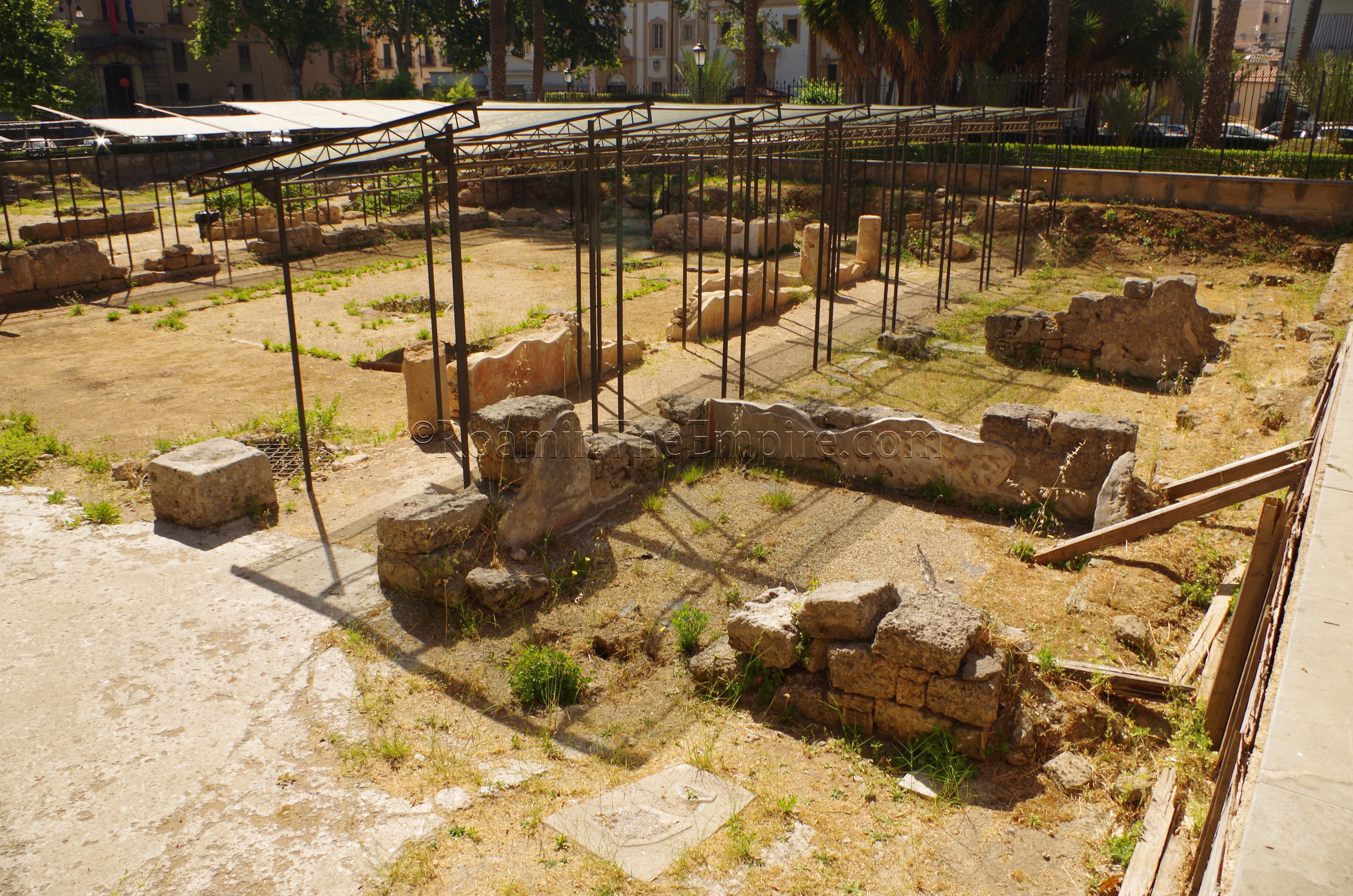
Just 75 meters to the southwest of the square in front of the cathedral is the Villa Bonanno park. In the southeastern corner of the park are the remains of two Roman villas. When I visited, there was no entrance to the villa. It was fenced off and there was certainly the infrastructure for visits (signs inside the fenced area, paths, an associated building at what would be the entrance), but, there were no posted hours or any sign that it was ever recently open. It is notable that the Orpheus mosaic in the archaeological museum came from these villas. Some in-situ mosaics and wall decoration can be seen from the outside, and various elements have some awnings to offer protection from the elements.
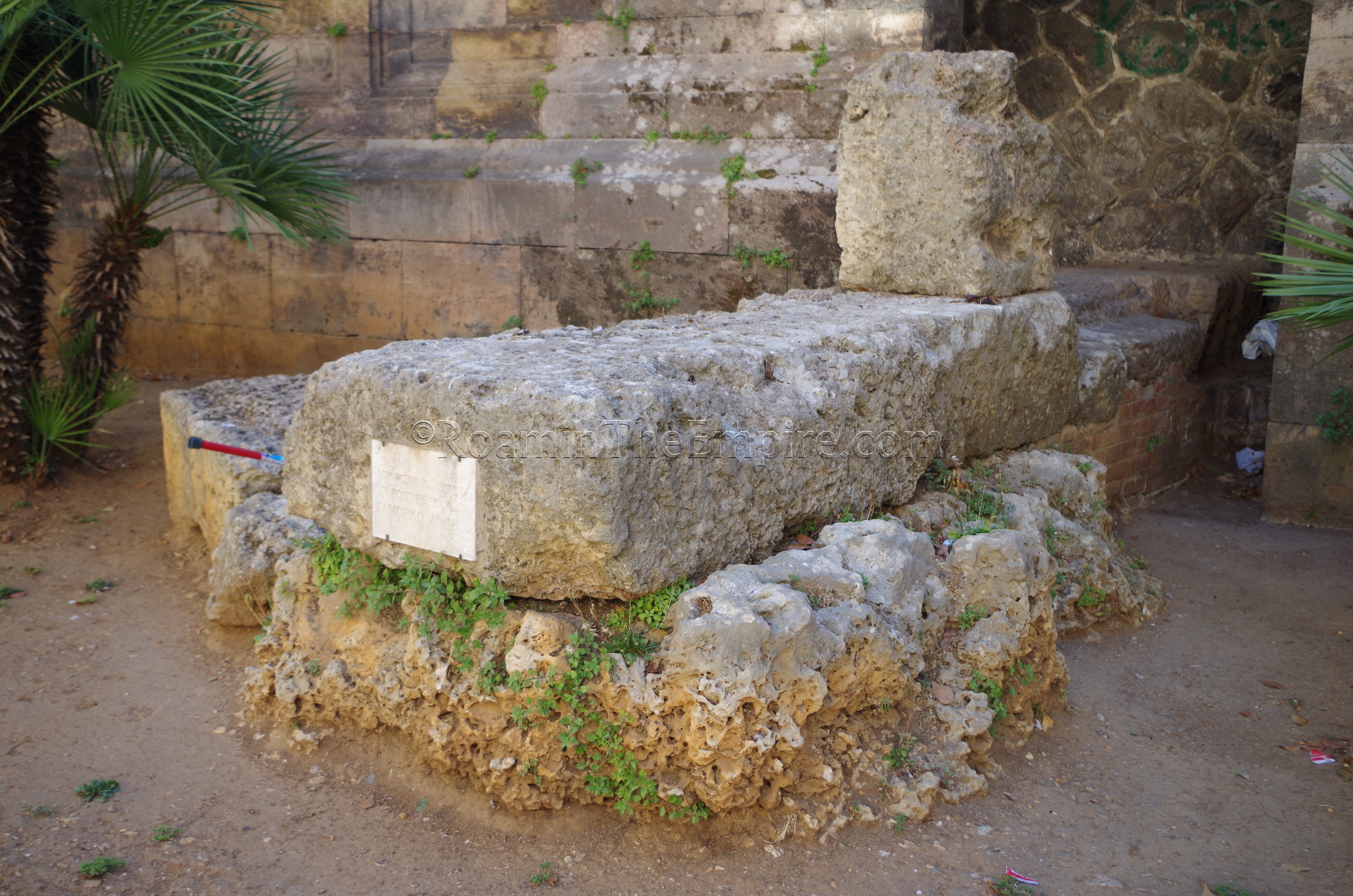
Back to the east is a church near the Fontana Pretoria, off Piazza Bellini; the Chiesa di San Cataldo. This church was built on the remains of the Roman era city walls, and a small portion of those walls extends out from under the church on the west side, facing Piazza Bellini. The small section of wall is, as would be expected given its location in a busy piazza and accessibility, in pretty poor condition. An unceremonious and equally poor condition plaque attached to the end of the wall notes its significance.
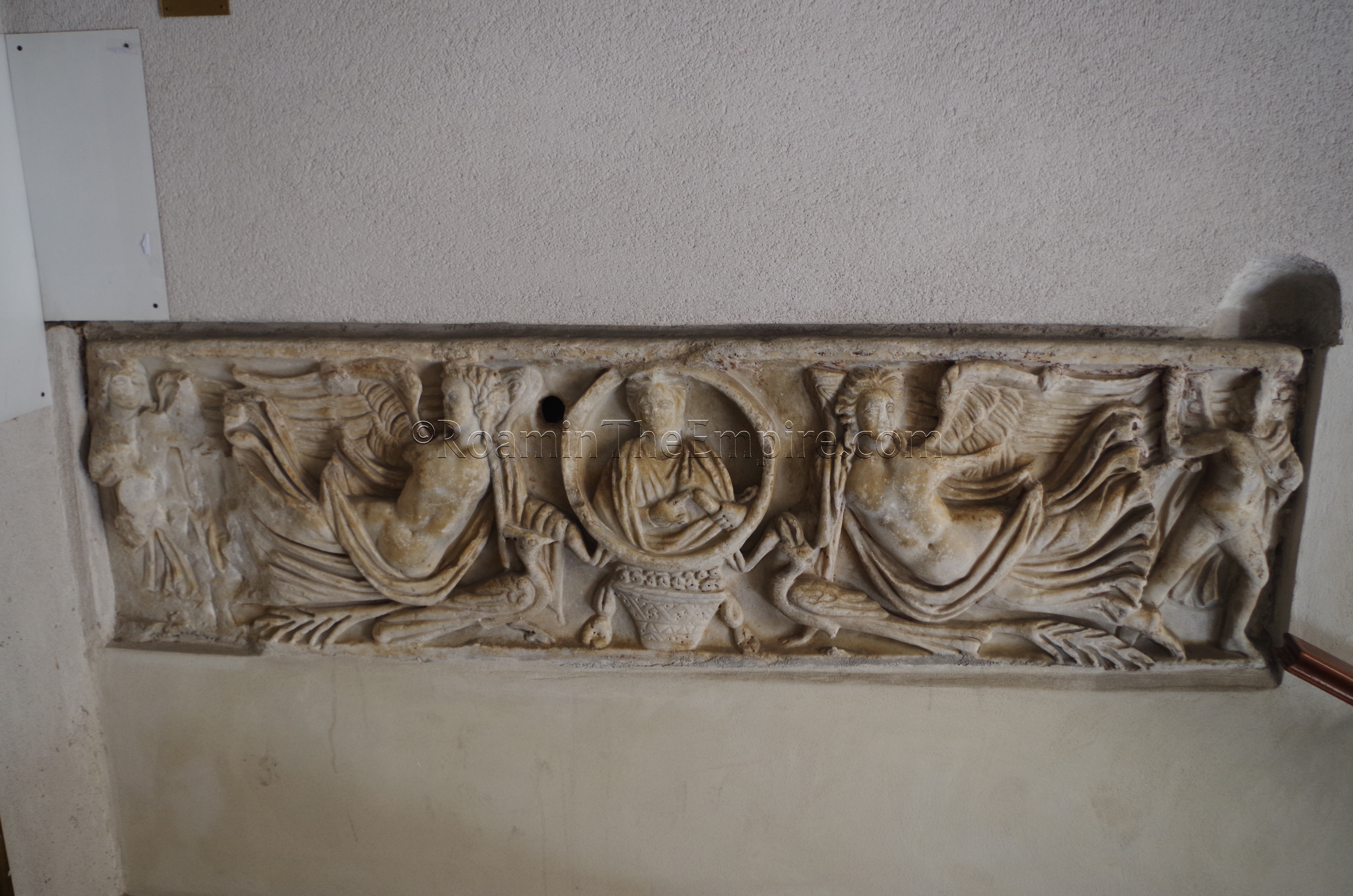
Near the Teatro Massimo, at Via Francesco Raimondo 3 is the Chiesa di Sant’Agostino. There is a side door off of Via Sant’Agostino, on the south side of the church, and in the entryway, before entering the main church, is a 4th or 5th century CE Roman sarcophagus incorporated into the wall. The stonework of the wall has since been covered over, but the sarcophagus has been left in place with a small plaque pointing out its provenance. Since it is inside the church, entrance hours are of some importance. As always, it is Southern Italy, so, hours can change, and I had to visit the church twice, as it was not open when it was supposed to be the first time I visited. It is, theoretically, open Monday to Saturday from 8:00 to 12:00 and 16:00 to 18:00, and on Sundays from 8:00 to 12:00.
Continued in Panormus Part II.
Sources:
Diodorus Siculus, Bibliotheca Historica, 13.88, 22.10, 23.18-21, 24.
Hoyos, Dexter. “Identifying Hamlicar Barca’s Heights of Heircte.” Historia: Zeitschrift Für Alte Geschichte, vol. 50, no. 4, 2001, pp. 490–495.
Morgan, M. Gwyn. “Polybius and the Date of the Battle of Panormus.” The Classical Quarterly, vol. 22, no. 1, 1972, pp. 121-129.
Polybius, Historia, 1.21, 1.24, 1.38-40, 1.56.
Rosenstein, Nathan. “Rome, Pyrrhus, and Carthage.” Rome and the Mediterranean 290 to 146 BC: The Imperial Republic, Edinburgh University Press, 2012.
Smith, Christopher John. Sicily from Aeneas to Augustus: New Approaches in Archaeology and History. Edinburgh Univ. Press, 2007.
Smith, William. Dictionary of Greek and Roman Geography. Walton & Murray, 1870.


